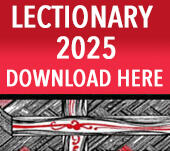We stand together today on a wahi tapu called by many Otamataha. A sacred land that over the centuries has been witness to great human flourishing as well as great human suffering.
The whakatauki/proverb declares: Whatungarongaro te tangata, toitū te whenua – The people fade from view but the land remains”. Today this sacred land remains, and bears witness to a hope that is endemic to the human spirit, and a hope based upon that which will unfold today.
We have gathered to participate in the Apology of the Anglican Church of New Zealand to Ngā Iwi o Tauranga Moana, whanui tonu, the collective of local tangata whenua and in particular ngā hapū of Ngai Tamarāwaho and Ngātii Tapu.
Apologies are blunt instruments that acknowledge wrong and attempt to restore relationships that have been broken. In this instance the broken relationship is between Tauranga Māori and the Church , via its former mission arm, the Church Missionary Society. Today the Anglican Church acknowledges its part in a complex series of events, which culminated in a betrayal of trust that ultimately resulted in the loss of land and the fissuring of a relationship with local iwi that was inextricably linked to the use and occupation of this land by CMS. The following is an attempt to background some of the events that lead to today’s Apology.
In the 1820’s various members of CMS, including its leader Reverend Henry Williams made several visits to Tauranga from their headquarters in Paihia. On two occasions, the missionaries sailed as peacemakers alongside the multiple waka taua of Ngāpuhi, as they attempted to dissuade the northern tribe from their intent of utu. They also visited at other times to trade for potatoes and kumera, taking some children back to Paihia for schooling. As a result of these visits, CMS was invited by local rangatira to establish a mission station in the region. Eventually in 1838, the Anglican missionary Archdeacon Brown and his family arrived from Matamata. He was to remain in Tauranga until his death in 1884.
Brown received strong support from local leaders including Ngāti Tapu tohunga Matiu Tahu and the Ngati Hauā kingmaker: Wiremu Tamihana Tarapipipi Te Waharoa. The strong relationship that Brown forged over a period of years was demonstrated by the fact that many families took the name Brown/Paraone as a sign of respect for their pastoral shepherd.
After a period of settling Brown, on behalf of CMS negotiated the purchase of 2 parcels of land which together equated to 1333 acres. Known as the Te Papa peninsula, it forms the backbone of modern Tauranga City and stretches from the Strand to Gate Pa.
Why did the Archdeacon Brown purchase such a large piece of land – far more than the mission needed for its own purposes? From his journals we discern several reasons, but none were for personal gain. These included his concern at the growing demand for land by the new settlers, many of whom he considered of dubious character and who had little regard for the well-being of tangata whenua. Not to mention their total disregard for local tikanga and lore. Secondly, he wanted to demonstrate to local Māori CMS’s long-term commitment. In other words, this acquisition was not a commercial purchase, but a relational transaction based upon mutual trust. The land was a tohu, or a symbol of a covenantal agreement.
This relational commitment is expressed in CMS’s own document which says about Te Papa: “That land was acquired and is retained under a solemn Trust that it should be applied to the benefit of the Native race & Church…”. This pledge was to be sorely tested by the ensuing events that enveloped Brown and his co-workers in the years ahead.
These events developed as a result of the Crown’s agenda to develop Te Papa as a strategic military settlement and settler outpost. Bishop William Williams of Waiapu and Archdeacon Brown, both members of the CMS Land Board began to refer to Te Papa at this time as Naboth’s Vineyard. A reference to the Old Testament story, whereby an ancestral plot of land was seized by the monarchs of the day.Naboth’s initial response to King Ahab’s request for land is interesting. He response for which he lost his life and land was this: “The Lord forbid that I should give you the inheritance of my ancestors.” Significantly, Naboth’s vineyard became a metaphor utilized by many rangatira in several parts of the motu in response to the unjust occupation and seizure of their lands.
In January 1864, Te Papa and the mission station was occupied by Government troops who sought to thwart local Māori support of Kingitanga. This led to the local battles of Gate Pa/Pukehinahina, Te Ranga and the Bush Campaign. The Government consequently labelled local Māori as “rebels” under the New Zealand Settlement Act and confiscated about 50,000 acres of Tauranga land.
Brown and William’s appellation of Te Papa as Naboth’s Vineyard was prescient. The Government’s ambitions to develop the Tauranga peninsula as a new township gathered momentum.
Pressure was placed upon CMS to sell the land to the Crown. Under instructions from the UK Board, the NZ Land Board initially resisted this pressure. The Board reminded the New Zealand missionaries of their commitment of Trust re the Te Papa purchase. They also stated that if the Government wanted the land, they would need to requisition it.
Finally, however in an ironic twist, without discussing the situation with local Māori, Bishop William Williams, Archdeacon Brown and Reverend Robert Burrows signed a document, gifting 4/5th s of the land to the Crown. Frederick Whitaker, the Government Secretary who dealt with the transaction expressed surprise at the “generosity of CMS’s offer”. One can only surmise at the reasons for the change of heart. The remaining 1/5th was retained and sold as sections within a few years. Archdeacon Brown kept 17 acres for his own family. The present-day Elms is where he maintained his residence.
Te Papa, which once housed a thriving mission station, and thriving Māori community, with schools, chapels, training institutions and local maara, morphed into a settler and military town. Local Māori were displaced, and the work of the mission dwindled. Te Papa was certainly Naboth’s Vineyard. The heart of present-day Tauranga City has been founded upon this legacy; generations of new settlers have benefited from this betrayal of trust. However, hopefully this Apology today by the Anglican Church signals a tatau pounamu, a doorway into reconciliation which will yield not only a healed relationship between tangata whenua and the Church, but also the healing of the land on which the City dwells.
Whatungarongaro te tangata, toitū te whenua.

















Comments
Log in or create a user account to comment.